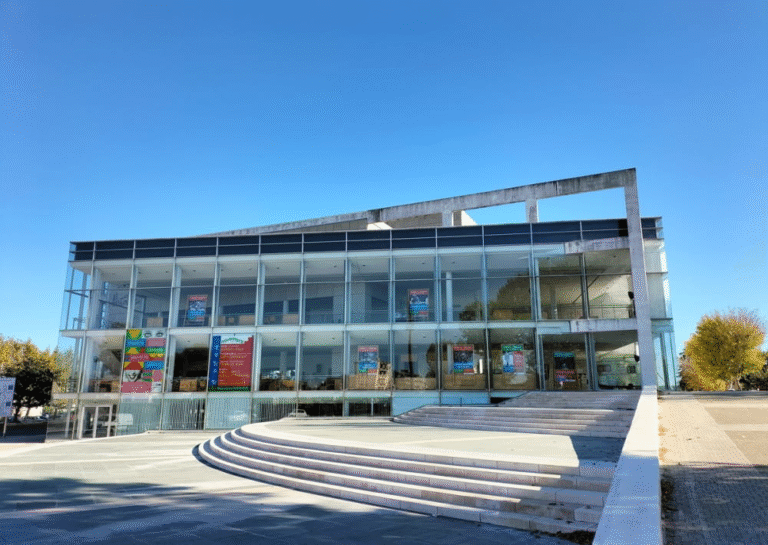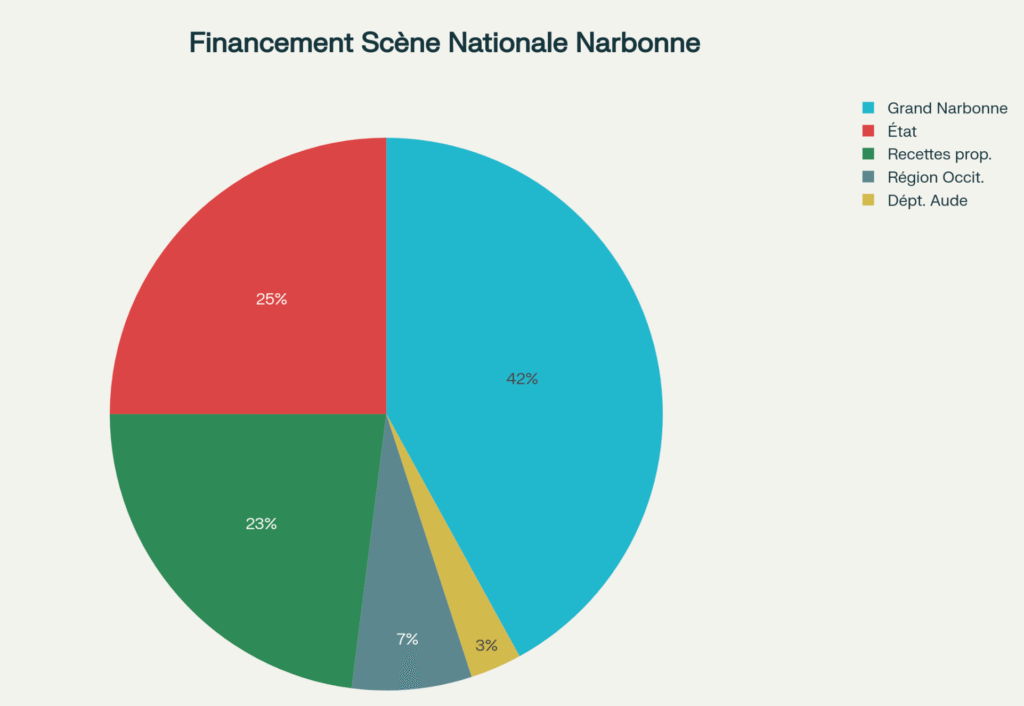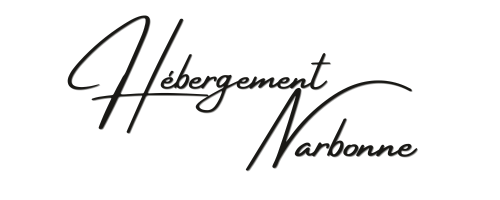Theater + Cinema – Grand Narbonne National Stage I Info
The Théâtre + Cinéma Scène nationale Grand Narbonne is one of the most important cultural facilities in the Occitanie region, serving a territory of more than 130,000 inhabitants. Inaugurated in 1994, this establishment has undergone various transformations to become today a Public Establishment for Cultural Cooperation (EPCC) directed by Fabien Bergès since July 2022. With its 42 annual live shows, 800 cinema screenings and 176 public events , this national scene asserts itself as a major player in French cultural decentralization.
Summary

History and Institutional Evolution
Origins and Creation (1994)
The Narbonne Theatre was inaugurated on October 21, 1994 , as part of the ambitious policy of cultural decentralization led by the Ministry of Culture. This creation demonstrated the desire of local authorities to provide the region with high-performance facilities and to affirm "the need for encounters with art ." The building, constructed on Avenue Maître Hubert Mouly, benefited from the Scène nationale label , one of the 78 establishments in this network of excellence created in 1991.
The facility was initially managed by the City of Narbonne before being transferred to the urban area in 2003, thus becoming a community facility. This institutional development reflected the recognition of its supra-municipal influence and its structuring role for the entire territory of Greater Narbonne.
Crises and Recoveries (2016-2022)
The period 2010-2016 marked a difficult turning point for the institution. Under the previous leadership, the national stage had accumulated €726,000 in debt over a decade, with programming deemed inconsistent with the Ministry of Culture's objectives. The state even threatened to withdraw the precious National Stage label.
The arrival of Marion Fouilland-Bousquet in January 2016 initiated a spectacular recovery. A drastic rescue plan was implemented: partial unemployment for staff, cancellation of nine shows in the 2017-2018 season, representing a reduction of 400,000 euros in expenses . At the same time, the Grand Narbonne agreed to a debt waiver of 320,000 euros.
This exemplary recovery was validated by an inspection report from the Ministry of Culture in 2021 , praising the director's management and confirming the achievement of the set objectives. However, tensions with the president of Grand Narbonne, Didier Mouly, led to the departure of Marion Fouilland-Bousquet in July 2021.
The Transformation into EPCC (2022-2024)
The year 2022 marks a new chapter with the appointment of Fabien Bergès as director. Former director of Sillon in Clermont-l'Hérault and founder of the Humani Théâtre company, he brings a renewed vision to the program.
Above all, the establishment was transformed into an EPCC (Public Establishment for Cultural Cooperation) in 2024. This statutory change, long desired by local elected officials, strengthens public governance with a board of directors of 22 members divided between: 8 representatives of Greater Narbonne, 3 from the City of Narbonne, 3 from the State, 2 from the Departmental Council, 4 qualified individuals and 2 staff representatives.

Discover La Maison Gustave
Discover La Villa Ambrosia
Architecture and Technical Equipment
Building Design and Layout
The Scène Nationale building, designed in the architectural spirit of the 1990s, features a modern façade of raw concrete and glass characteristic of the cultural architecture of that era. Located at 2 Avenue Maître Hubert Mouly, it enjoys a strategic position on the axis connecting the highway to the historic center of Narbonne.
The facility is organized around two main rooms : a large 900-seat room dedicated to live performances and a 271-seat multi-purpose room mainly used for cinema . The latter will soon be supplemented by a second 109-seat cinema room , bringing the total cinema capacity to 380 seats.
Additional Spaces and Services
The establishment includes several specialized spaces: a rehearsal studio for hosting artists in residence, an exhibition room (currently being transformed to become the new cinema), as well as professional dressing rooms and technical spaces.
Les Comptoirs , a bar-restaurant space, is a central element of the venue's conviviality. Open every day except Monday, before and after shows and films, they offer free Wi-Fi access and participate in cultural activities with specific events. L'Air de rien , a bookstore and second-hand bookseller, is open on show nights, completing the cultural ecosystem.
Accessibility has been designed to accommodate spectators with reduced mobility, blind, visually impaired, deaf and hard of hearing , demonstrating the desire to be open to as many people as possible.
Programming and Artistic Influence
A Demanding Multidisciplinary Offer
Fabien Bergès's program is structured around an ambitious multidisciplinary approach combining theater, dance, music, circus, and cinema. For the 2024-2025 season, the establishment offers 195 performances of live shows , demonstrating a significant increase in popularity.
The cinematographic dimension occupies a nearly 800 annual screenings , the room being classified Art et Essai with the 4 labels (Young Audience, Research and Discovery, Heritage and Repertoire, Première Vision). This cinematographic programming, which favors films in the original version with subtitles , has enjoyed growing success with nearly 45,000 admissions in 2024 , the best year of its existence.
Territorial Influence and Decentralized Actions
The national scene's territorial mission is expressed through performances in 19 municipalities in Greater Narbonne and two other municipalities in Aude . This decentralization makes it possible to reach audiences far from traditional cultural facilities, in accordance with the public service missions of the national scenes.
Arts and cultural education activities represent a fundamental pillar with 51 events dedicated to schools . These programs include workshops, meetings with artists, awareness-raising programs and collaborative projects with local schools.
Partnerships and Artistic Collaborations
The National Scene develops numerous cultural partnerships with local stakeholders: City of Narbonne, Patio des Arts, Espace Média, Narbo Via, Fontfroide Abbey, MJC, Narbonnaise Regional nature
At the regional level, the establishment maintains privileged relations with the National Stages of Sète, Perpignan, as well as with the Sorano Theater in Toulouse and the Montpellier Opera . A unique partnership was signed in May 2024 between Toulouse Métropole and Grand Narbonne, providing for exchanges between the Toulouse Théâtre de la Cité and the Narbonne National Stage.
Financing and Economic Model
Structure of Public Funding

The funding of the National Scene is based on a model of territorial cooperation involving several public authorities. Greater Narbonne is the main funder with approximately 42% of the budget, reflecting its role as a local authority. The State, via the DRAC Occitanie, provides 25% of the funding , confirming the national commitment to the network of national scenes.
The Occitanie Region contributes 7% , as part of its policy of supporting the performing arts. The Aude Department contributes 3% of the funding. This distribution illustrates the logic of ascending co-financing characteristic of French cultural institutions, where local authorities provide the bulk of the funding.
Clean Recipes and Diversification
Own revenues represent approximately 23% of the budget , a satisfactory rate for a facility of this nature . These revenues come mainly from ticket sales for shows and cinemas, services provided by the Comptoirs, and private partnerships.
The establishment also benefits from the support of private sponsorship and partnerships with local businesses, particularly in the wine sector with estates such as Château Rouquette-sur-Mer. This diversification of resources contributes to the establishment's financial stability.
Budget and Payroll
The annual budget of the National Stage can be estimated at between 4 and 5 million euros , consistent with the standards of national stages of comparable size. The establishment employs approximately 40 permanent staff, in addition to numerous intermittent performers, technicians and artists.
The transformation into an EPCC made it possible to secure funding and improve budgetary readability, with a legal framework better suited to the challenges of public equipment.
Economic and Cultural Impact on the Territory
Direct Economic Impacts
The National Stage generates significant economic benefits for the Narbonne region. With its 195 annual performances and nearly 45,000 cinema admissions , the establishment attracts an audience that also frequents local shops, restaurants and accommodation.
Spectators from outside the region contribute particularly to these benefits, sometimes staying for several days and discovering the local tourist offerings. This dynamic is part of the Greater Narbonne tourism diversification
Contribution to Territorial Attractiveness
The establishment constitutes a factor of residential attractiveness , contributing to the dynamic and cultural image of Narbonne. For businesses and executives considering a location in the area, the presence of a quality cultural offering represents a decisive asset.
The National Stage also contributes to external influence , welcoming nationally and internationally renowned artists who convey a positive image of the region. This cultural reputation complements the city's heritage appeal, which has been awarded the "City of Art and History" label.
Training and Professionalization
The institution plays a role in training and professional development in the regional cultural sector. Hosting artists in residence, co-productions, and partnerships with training organizations contribute to the development of local artistic skills.
Educational missions with schools contribute to raising cultural awareness among future audiences and potential performing arts professionals. This educational dimension extends to continuing education for teachers and cultural mediators.
Challenges and Future Prospects
Extension and Modernization of Equipment
The main structuring project concerns the extension of the cinema offering with the creation of a second 109-seat cinema, scheduled to open in January 2026. This extension responds to strong public demand and will enable the consolidation of the Art House programming with films kept on the bill for longer.
At the same time, the establishment is preparing to launch a film festival in February 2026 , combining screenings, shows and meetings. This new event is part of the desire to create unifying events and strengthen the cinematic identity of the place.
Financing and Sustainability Issues
Like the entire cultural sector, the Scène Nationale faces the challenges of public funding in a context of budgetary constraints. The transition to EPCC status nevertheless offers increased legal and financial stability.
Diversification of resources is a major challenge, particularly through the development of private patronage and the promotion of spaces (Les Comptoirs, space rental). The establishment is also exploring the possibilities offered by European funds , in particular the FEDER Occitanie from which it already benefits.
Innovation and Adaptation to New Audiences
The National Scene must continue to adapt to changes in cultural practices , particularly among younger generations. The integration of digital technology into cultural mediation, the development of new performance formats and openness to new aesthetics constitute priority areas for development.
The institution is also working on broader accessibility , both physical and in terms of price and culture, to reach audiences still far removed from cultural offerings. This ambition for inclusion is part of the fundamental missions of the cultural public service.
The Théâtre + Cinéma Scène nationale Grand Narbonne represents thirty years of cultural excellence in the Occitan region. From its creation in 1994 to its recent transformation into an EPCC, the institution has overcome crises, reinvented itself, and consolidated its role as a major player in French cultural decentralization. With more than 1,000 shows and 10,000 films shown since its opening, the Scène nationale has contributed to the artistic education of several generations and to the cultural influence of Narbonne. Under the direction of Fabien Bergès, the institution is approaching the future with ambitious projects: cinema expansion, a new festival, and strengthening territorial partnerships. Contemporary challenges—financing, changing audiences, and the ecological transition—require continuous adaptation, but the strength of the partnership model and the quality of the team allow us to look forward to the coming decades with confidence. The National Scene remains an exceptional tool serving art, culture and territorial development, embodying the values of public service and artistic excellence which form the basis of the national network of national scenes.
Retain
🎭 The Essentials in Figures
- 30 years of existence : inaugurated on October 21, 1994
- 900 seats in the theater, 271 seats in the cinema (soon to be 380)
- 42 live shows and 800 cinema screenings per year
- 195 annual performances and 45,000 cinema admissions in 2024
- 40 permanent employees and an estimated budget of 4-5 million euros
🏛️ A Renewed Governance Model
- EPCC status since 2024 : Public Establishment for Cultural Cooperation
- Management provided by Fabien Bergès since July 2022
- Shared financing: Greater Narbonne 42%, State 25%, own revenue 23%
- Exemplary recovery after the 2016 financial crisis
🎨 Exceptional Territorial Influence
- 21 municipalities served in the Greater Narbonne area and beyond
- 176 public meetings and 51 school activities annually
- 4 Arthouse cinema labels : Young Audiences, Research and Discovery, Heritage, Première Vision
- Partnerships with Toulouse, Sète, Perpignan and Montpellier
🚀 Future Projects
- 109-seat cinema
- Film festival planned for February 2026
- Strengthening the Art et Essai offering and artistic residencies
💡 Key Points for Success
- Multidisciplinarity assumed: theater, dance, music, circus, cinema
- Convivial spaces : Les Comptoirs and L'Air de rien
- Public service mission : accessibility, mediation, territory
- Resilience : demonstrated capacity for recovery and adaptation


